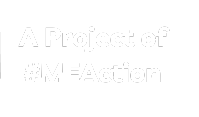Basilar invagination
Basilar invagination is an infolding of the tip of the spine where it meets the brain and skull, potentially compressing the spinal cord and brainstem.[1]
Prevalence[edit | edit source]
Symptom recognition[edit | edit source]
Notable studies[edit | edit source]
A 2019 South Korean study of 242 patients found that "[p]atients with BI have 82 times strong possibility of radiologic confirmed [cervicomedullary junction compression] (CMJ), while [atlantoaxial subluxation] (AAS) has 6-fold and pannus formation has the 3-fold possibility. Compared to the low incidence of BI, AAS and pannus formation have more proportion in CMJ compression. Furthermore, wrist joint erosion was correlated with vertical subluxation (VS) and AAS." It went on to conclude that "BI has a very strong possibility of CMJ compression, while AAS and pannus formation have a high proportion in CMJ compression. Hence bilateral wrist joint erosion can be used as an indicator for the timing of screening test for cervical involvement. We suggest the early recommendation of cervical spine examination for the diagnosis of cervical involvement in order to prevent morbidity and mortality."[2]
Possible causes[edit | edit source]
See also[edit | edit source]
Learn more[edit | edit source]
References[edit | edit source]
- ↑ "Basilar Invagination". The Spine Hospital at The Neurological Institute of New York. Retrieved September 2, 2019.
- ↑ Chung, Jaewoo; Bak, Koang Hum; Yi, Hyeong-Joong; Chun, Hyoung Joon; Ryu, Je Il; Han, Myung-Hoon (August 9, 2019). "Upper Cervical Subluxation and Cervicomedullary Junction Compression in Patients with Rheumatoid Arthritis". Journal of Korean Neurosurgical Society. doi:10.3340/jkns.2018.0234. ISSN 2005-3711. PMID 31392874.

